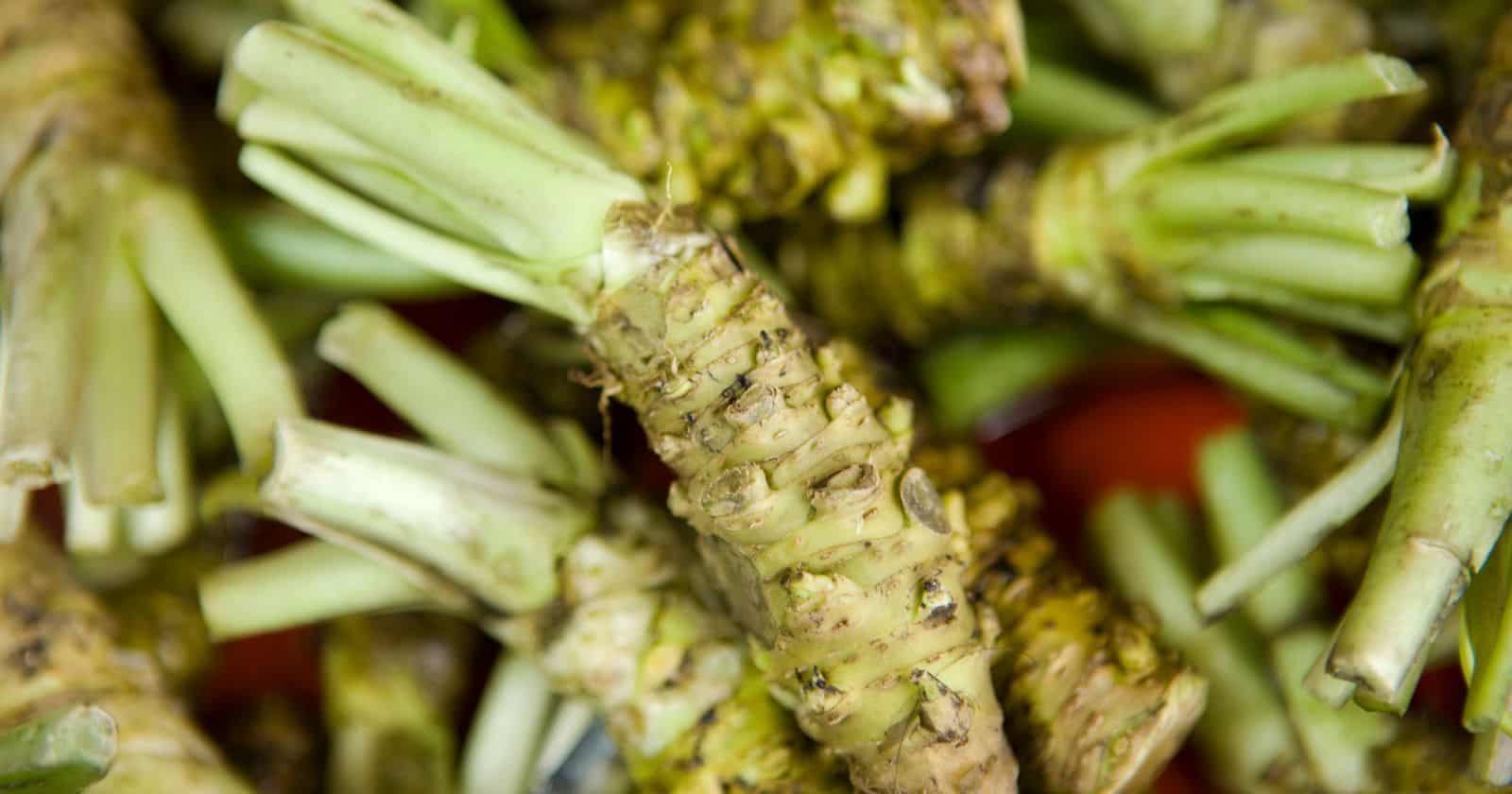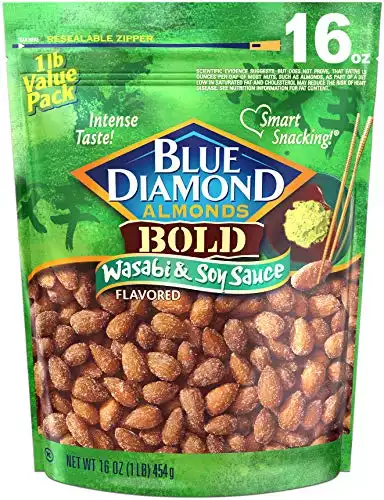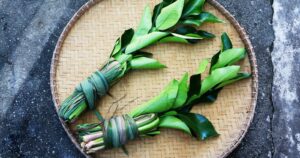Are you a sushi lover who craves that intense, sinus-clearing heat that can only come from wasabi?
Do you know what wasabi really is, or have you been unknowingly settling for a substitute? Discover the truth about this distinctive condiment with our guide to what wasabi is.
Wasabi is a pungent condiment made from the root of the Wasabia japonica plant. It is notoriously difficult to cultivate due to its specific growing requirements, and most of what is sold as wasabi is a blend of horseradish, mustard, and food coloring. True wasabi has a more delicate flavor and a heat that dissipates quickly.
In the following sections, we’ll explore the origins and history of wasabi, the science behind its unique spiciness, and its culinary applications beyond sushi.
We’ll also cover tips for selecting and storing fresh wasabi and some common misconceptions about this beloved condiment.
Whether you’re a wasabi novice or a seasoned pro, our guide has everything you need to know about what wasabi is. So let’s get started!
What is Wasabi?
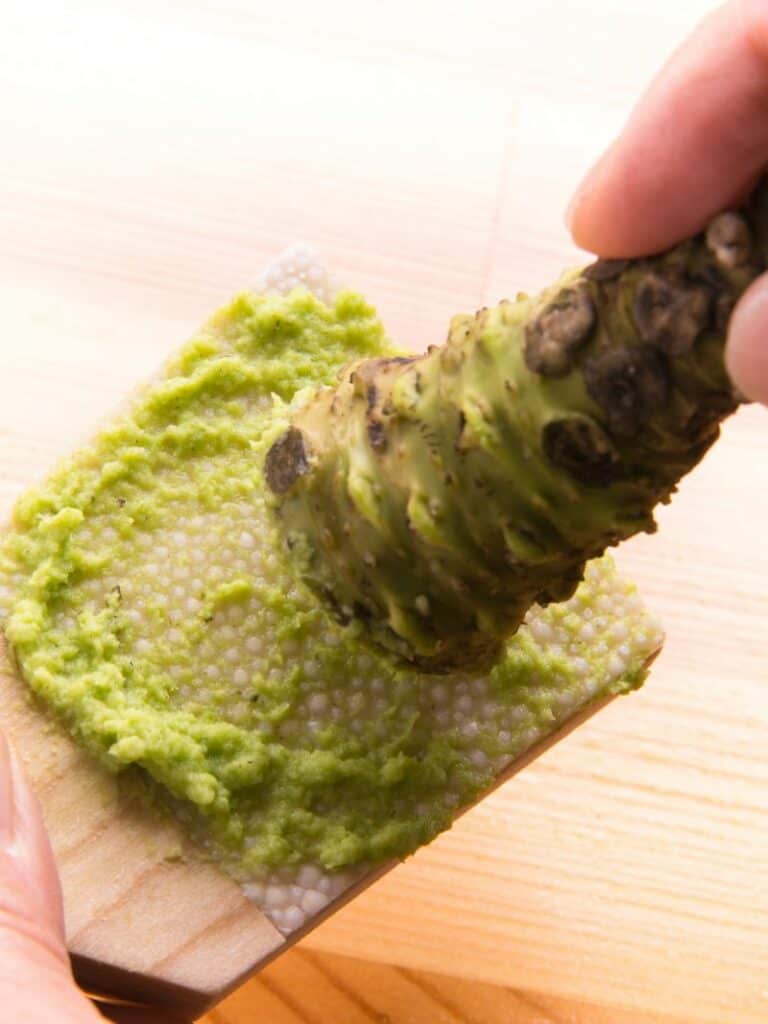
Wasabi is a Japanese condiment made from the stem of the Wasabia Japonica plant. Its flavor is best described as a mix of spiciness, sweetness, and bitterness, with a slight coolness on the palate.
The Wasabia Japonica plant is difficult to grow, so authentic wasabi can be expensive. And many of the wasabi in restaurants may be Imitation Wasabi.
Imitation Wasabi
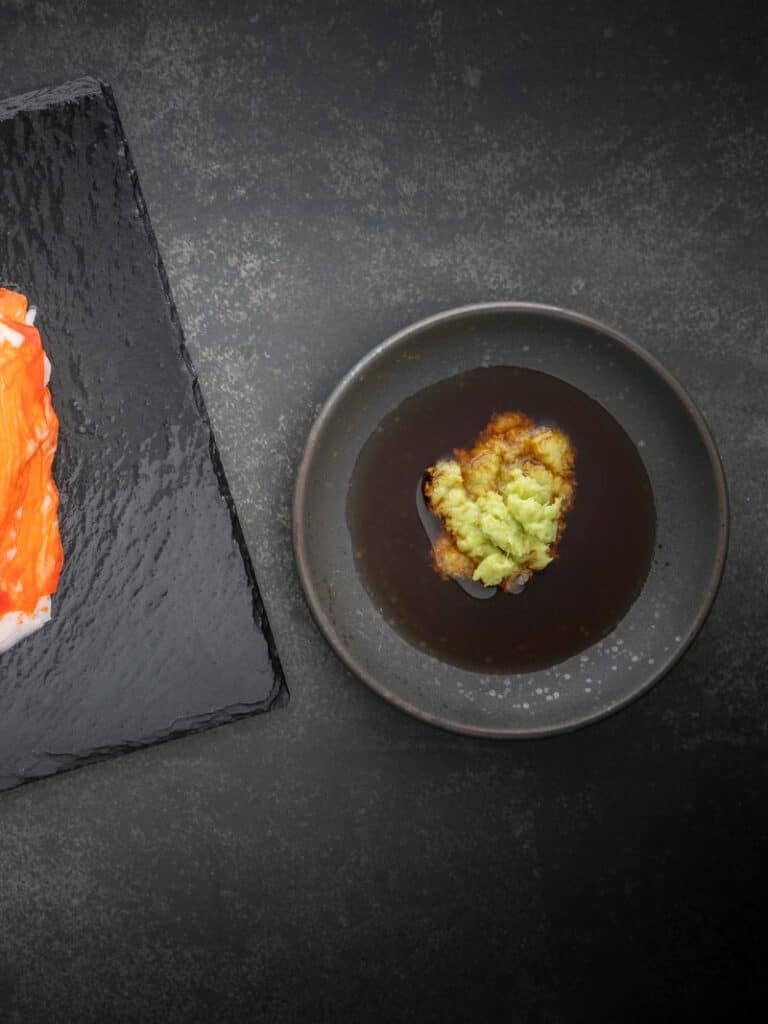
Many wasabi products in stores and restaurants are made from horseradish, mustard, and green food coloring.
While it may still taste similar to authentic wasabi, it lacks some of the unique qualities that make the real thing special.
Authentic Wasabi
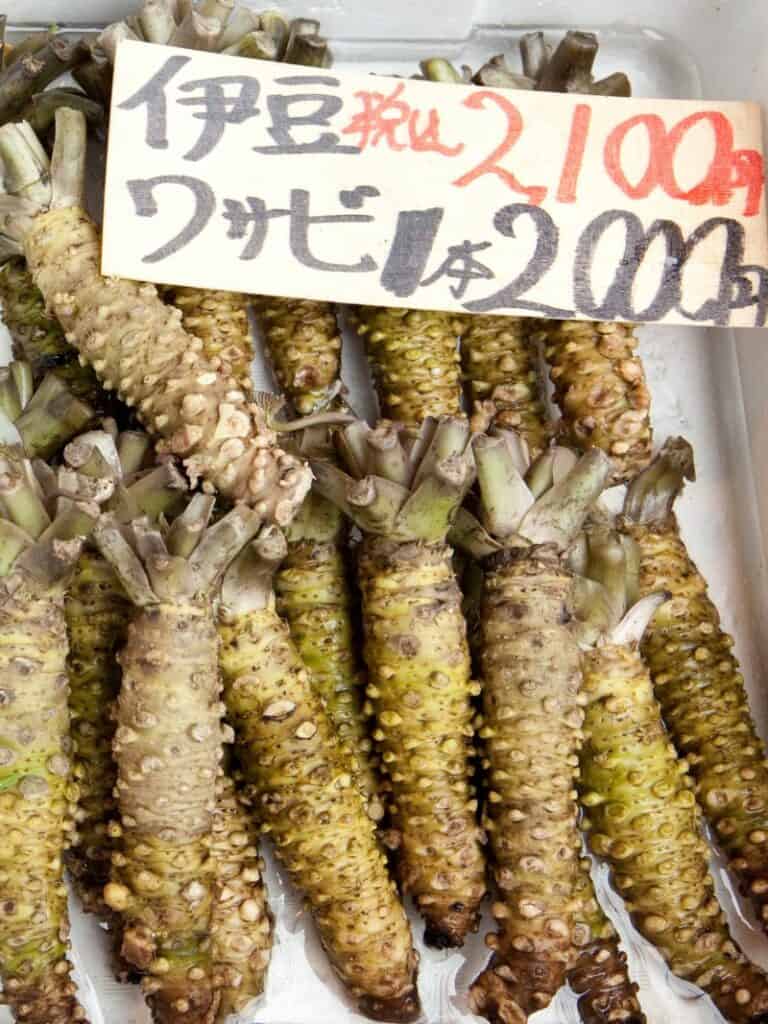
Authentic wasabi is typically made by grating the stem of the Wasabia Japonica plant using a sharkskin grater. This process releases the flavor and aroma of the wasabi, which is why it’s usually more expensive than imitation wasabi.
How To Check the Difference Between Imitation Wasabi and Authentic Wasabi
The difference between real and fake wasabi comes from taste and heat intensity. Real wasabi has a much milder taste and lacks the pungent aroma and burning sensation in your throat that one experiences with horseradish-based counterparts.
Because of its short shelf-life, real wasabi loses its flavor after about 15 minutes, making it unsuitable for most restaurants and grocery stores.
In terms of storage, it’s essential to ensure your wasabi does not come into contact with oxygen or humidity, as this can cause the product to spoil quickly.
For the best results, it’s recommended to part grate your fresh wasabi before use — but if you opt for pre-made options, then make sure they are labeled as “real” or ”fresh” wasabi.
Knowing how to differentiate between real and fake wasabi is an important step toward ensuring you experience its authentic flavor!
It may be difficult to spot the difference; here are some tips and tricks to help you differentiate between imitation wasabi and authentic wasabi:
- Look for ingredients – Check the ingredients list on the product label to see what’s inside. Authentic wasabi should list Wasabia Japonica or Wasabi Rhizome as the main ingredient, while imitation wasabi often includes horseradish, mustard, and food coloring.
- Check the price – Authentic wasabi is notoriously difficult to grow and harvest, so it’s more expensive than imitation. If a product is priced very low, it’s likely an imitation.
- Look at the color – Authentic wasabi is usually a pale green, while imitation wasabi is often a brighter, neon green.
- Smell it – Authentic wasabi has a unique, fresh aroma that’s hard to miss. If the product doesn’t have a strong scent, it’s likely an imitation.
- Check the texture – Authentic wasabi should be slightly grainy and harder to spread. Imitation wasabi will often be smooth and easy to apply.
- Taste it – Finally, the most obvious way to tell the difference is to taste it. Authentic wasabi has a complex flavor profile with an excellent finish, including sweetness, bitterness, and spiciness. Imitation wasabi will often taste more like horseradish and mustard and won’t have the same flavor complexity.
History Of Wasabi: From Ancient Times To Modern Cultivation
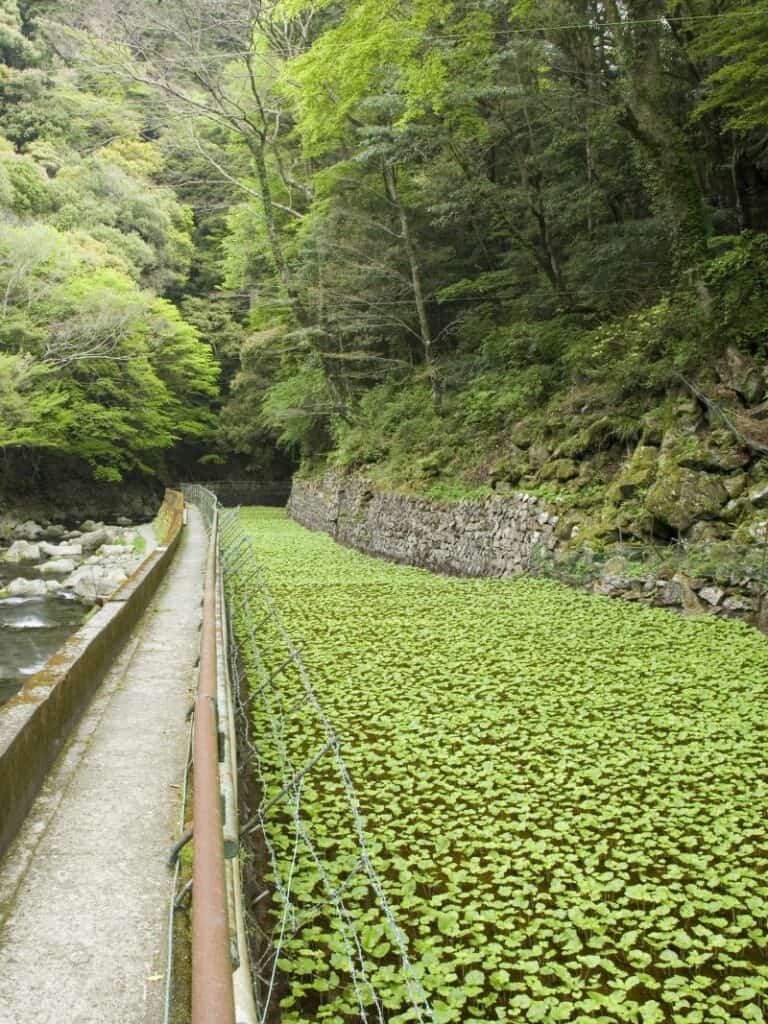
The history of wasabi dates back to ancient times in Japan. It has been used for centuries as a medicinal remedy, and its use was rather limited during this time.
As sushi culture gained popularity during the Edo period, so did the consumption of wasabi. The cultivation of wasabi is particular and demanding, and limited areas that can cultivate it exist.
Most wasabi is from the Shizuoka region in Japan, where legend tells that a farmer discovered the first cultivated wasabi.
As demand grew significantly, Wasabi production increased notably during the Bunka/Bunsei era (1804–1830).
Nowadays, its culinary uses go beyond sushi to include other Japanese dishes and drinks; by adding taste and flavor to food while also having health benefits such as anti-inflammatory properties and being high in vitamin C (100g of wasabi has vitamin C equal to 70% of daily need).
Understanding The Flavor Of Wasabi: What Makes It Unique
Wasabi is best known for its staple role as a flavor enhancer. It’s a powerful condiment with various uses, but the most popular one is its heat-generating properties.
Wasabi captures the warmth of freshly grated horseradish and adds an intense peppery taste; many people describe it as similar to jalapenos but with less lingering heat.
Wasabi can be used for more than just sushi. Its therapeutic purpose has been recognized for centuries – Wasabi is known to treat colds and can be found in certain medicines, including Baymax from Japan.
Besides, Wasabi adds a unique flavor that enhances the taste buds when added to many meals.
It’s commonly used in sauces for grilled fish or seafood dishes, and you can stuff vegetables with wasabi paste for an extra kick.
Wasabi boosts flavor without adding calories or unhealthy fats. The spicy horseradish-like condiment has been known since ancient times as a medicinal wonder, and today it offers numerous health benefits beyond flavor enhancement.
From treating colds to being rich in antioxidants, Wasabi is a fantastic condiment that deserves more attention in Western cuisine than just being served alongside sushi and sashimi.
The Health Benefits Of Wasabi: From Anti-Inflammatory To Anti-Cancer
Wasabi is a unique plant native to Japan that has gained attention due to its potential health-promoting properties.
Studies have shown that wasabi may help prevent cardiovascular disease, cancer, osteoporosis, and other diseases.
In one study involving healthy adults, consumption of a meal with wasabi resulted in less platelet aggregation, atherosclerosis, and thrombosis than a placebo meal.
Some of the health benefits of wasabi:
- Anti-inflammatory – Wasabi contains compounds with natural anti-inflammatory properties, which can help reduce inflammation.
- Rich in antioxidants – Wasabi is high in antioxidants, which are beneficial for reducing oxidative stress and fighting against disease.
- Boosts digestion – The enzymes in wasabi can help improve digestion and prevent digestive issues such as bloating and constipation.
- Cancer-fighting properties – Studies have shown that the compounds in wasabi may have cancer-fighting properties, particularly against certain types of cancer like leukemia and stomach cancer.
- Boosts immunity – Wasabi is high in vitamin C, which is essential for maintaining a healthy immune system.
- Heart health – Wasabi has been shown to help reduce cholesterol levels and prevent blood clots, which can help protect against heart disease.
- Anti-microbial – Wasabi has natural antimicrobial properties that can help prevent the growth of harmful bacteria in the body.
- Pain relief – Some studies have suggested that the compounds in wasabi may have pain-relieving properties, which can help reduce pain and inflammation in the body.
Culinary Uses Of Wasabi: Beyond Sushi And Sashimi
Wasabi is a staple condiment found in Japanese cuisine. It is traditionally served with sushi, sashimi, soba noodles, and other dishes.
If you want to incorporate more wasabi into your diet, many savory dishes feature this delicious and healthy condiment.
Here are a few ideas to get you started:
Sushi
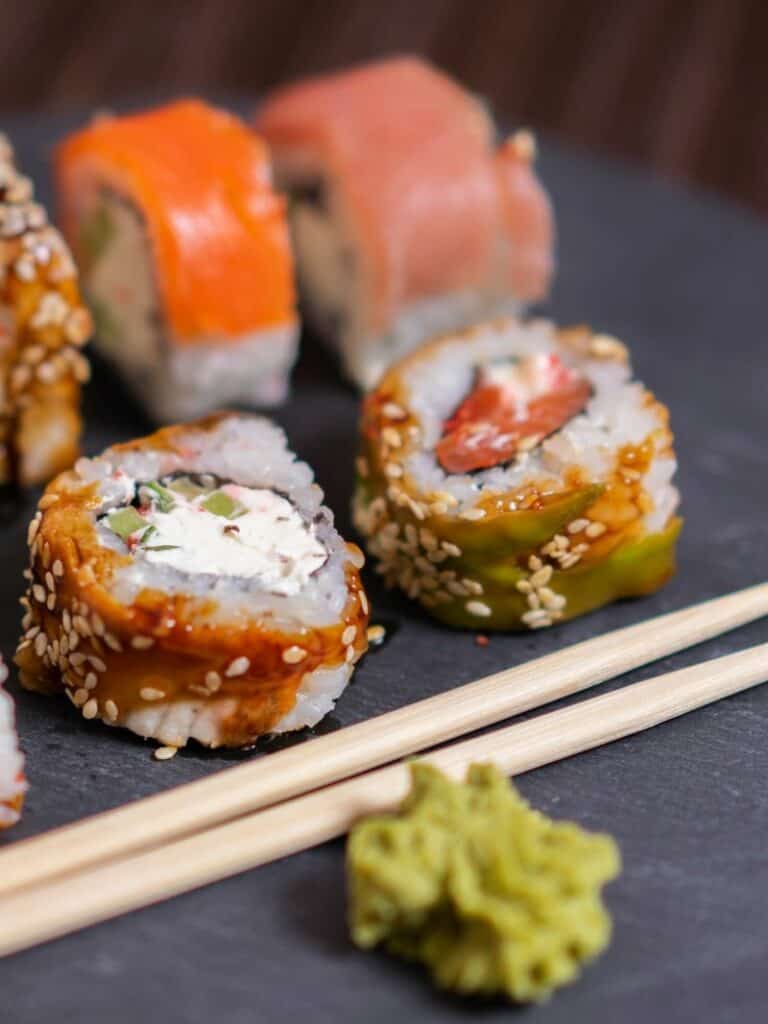
Wasabi is a traditional accompaniment to sushi, usually served as a paste alongside soy sauce. It’s a great way to add flavor and heat to your sushi rolls.
Miso Soup
Wasabi can be added to miso soup to give it a little extra kick of flavor. Add a small dollop of wasabi paste to your bowl and stir it.
Tempura
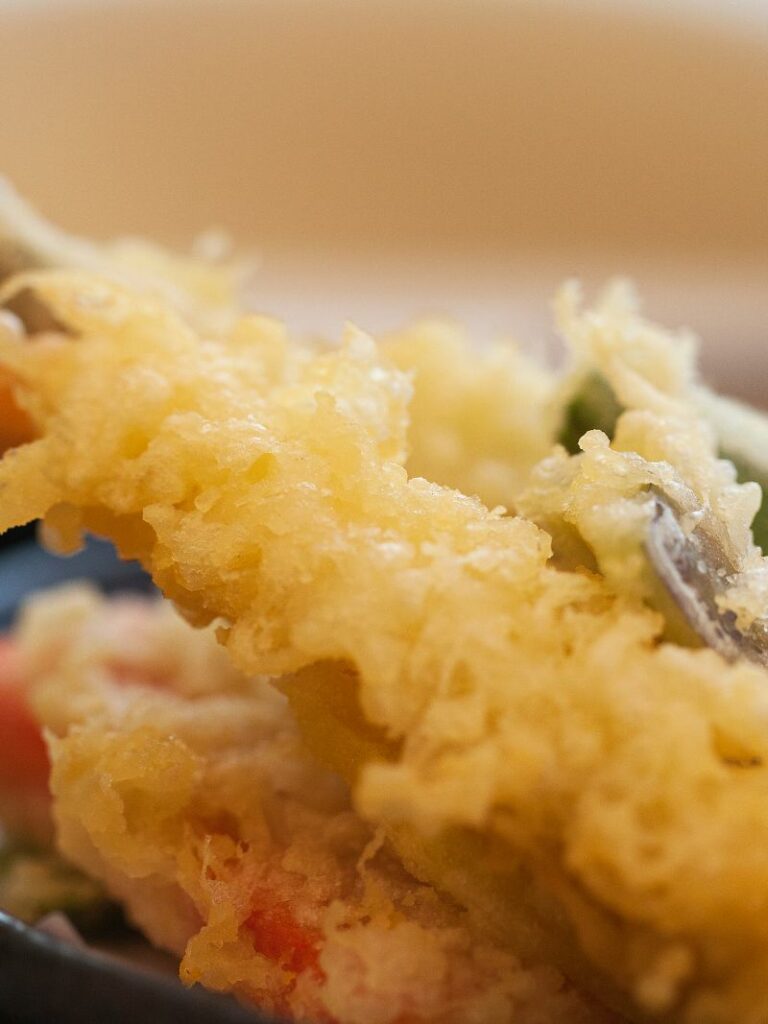
Tempura is a Japanese dish consisting of battered and fried seafood or vegetables. Adding a little wasabi to the dipping sauce can take it to the next level.
Grilled Meat
Wasabi can be used as a rub for grilled meats like steak or chicken. Simply mix wasabi paste with soy sauce and a little honey or sugar, then rub it onto your meat before grilling.
Noodles
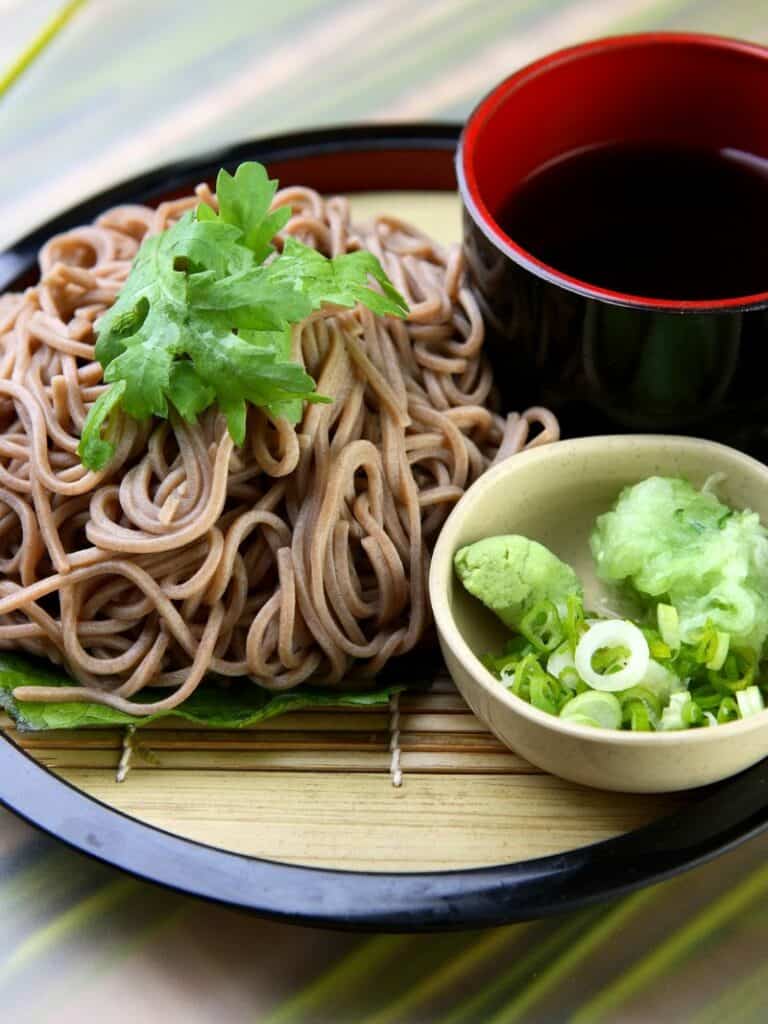
Wasabi can be added to various noodle dishes for a little extra flavor. Try mixing it into some udon noodles with soy sauce and sesame oil.
Wasabi Peas
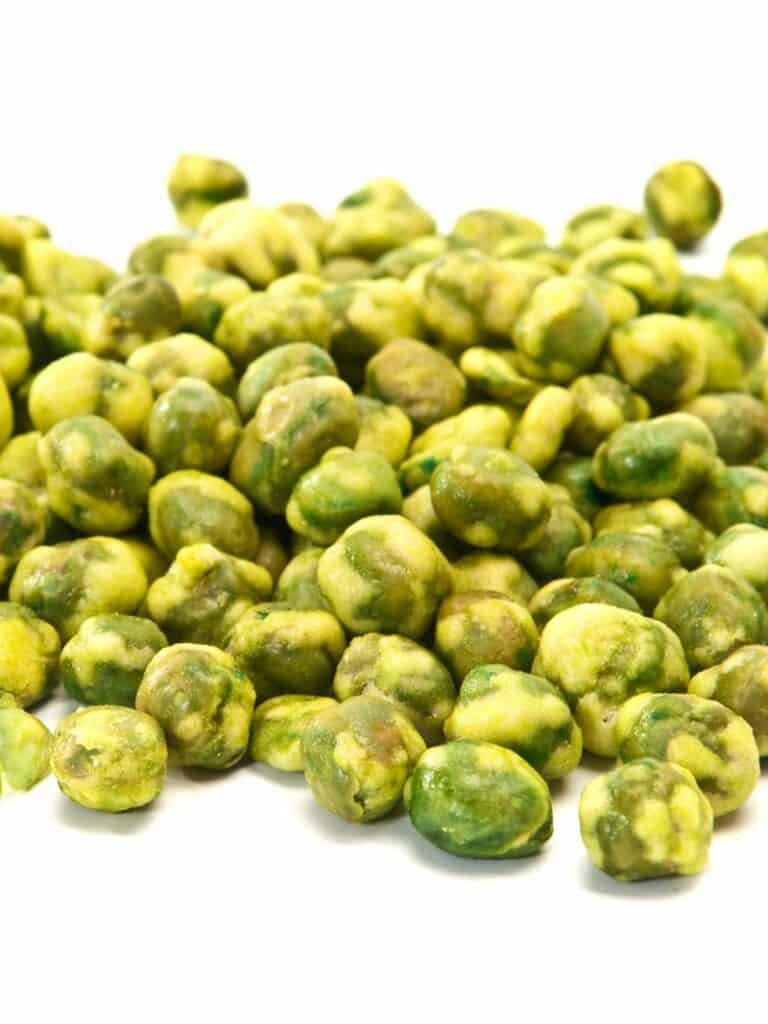
Wasabi peas are a popular snack with a crunchy, spicy coating made with wasabi powder. They’re an excellent option for a quick and easy snack.
16 Oz Resealable Bag (Pack of 1)
How To Store And Prepare Wasabi: Tips And Tricks
Wasabi is an acquired taste that can add a unique flavor to your dishes, but knowing how to prepare and store it is key properly.
The optimal temperature for storing wasabi is between 35 and 40 degrees Fahrenheit, so if you cannot keep it at this temperature, make sure to chill or freeze the root.
To freeze the wasabi root, grate it and wrap it tightly in cling film. Then place it on a baking sheet and transfer it to an airtight container after leaving it in the freezer for about an hour.
For refrigerator and frozen storage, remove a thin, dried layer of the wasabi before preparing again, giving you access to its unexposed flesh.
Another way of storing wasabi is by wrapping it in muslin cloth with its cut end exposed before immersing it in a bit of water and placing it in the fridge – where the wasabi can last up to 30 days.
Add some olive oil to the mixture before refrigerating any leftovers overnight. The key takeaway is that freshness ensures your dishes get as much flavor as possible from this green condiment – just like any vegetable!
Wasabi Substitutes
If you don’t have access to authentic wasabi or simply don’t enjoy its flavor, there are a few substitutes that you can use in your cooking.
Here are some common wasabi substitutes:
Horseradish
Horseradish is often used as a substitute for wasabi, as it has a similar flavor profile. It’s usually much easier to find than authentic wasabi and can be used similarly.
Mustard
Mustard is another common substitute for wasabi. It has a similar spiciness and can be used in many of the same dishes.
Wasabi powder
Wasabi powder is a mixture of horseradish, mustard, and food coloring that can be rehydrated with water to create a paste. While it’s not the same as authentic wasabi, it can be a good substitute in a pinch.
Some wasabi powder may be extracted from real wasabi like Pure Wasabi Powder From The
Namida is Japanese for 'tear.' It refers to this pure wasabi's intense heat.
Wasabi is cultivated by masters who tend it under challenging conditions.
It grows only near cold, clear streams in mountain valleys. Sushi chefs put it between fish and rice in the nigiri.
Mix this premium wasabi powder with cold water and serve it with your favorite sushi.
Ginger
Fresh ginger can substitute for wasabi in some dishes, as it has a similar spiciness.
It’s perfect in dishes like sushi, where it can add a little extra flavor and heat.
Sriracha
Sriracha is a famous hot sauce that can be used as a substitute for wasabi in some dishes. While it’s not as similar in flavor as some other options, it can still add extra heat to your food.
Ultimately, the best substitute for wasabi will depend on the specific dish you’re making and your personal preferences. Experiment with different options to find the ones that work best for you.

